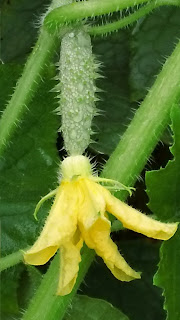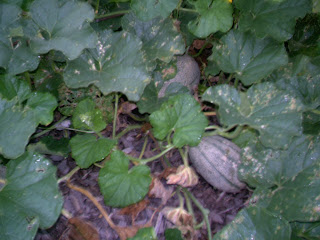Project Worth Outreach held our latest meeting on July 23 followed by a cookout. We had lots of good garden food at the cookout that was grown by our participants in their garden. We had approximately 60 people in attendance. We had several participant's turn in some impressive harvest numbers for the month of July. Most everyone seemed pleased with the progress of their garden since we had received several days of rain. In recent weeks I have visited every garden site in our program and I must say that the gardens are looking pretty good.
Below you will find a statement from one of our youngest gardeners who also happens to be my nephew. He told me how much he enjoyed writing this blog post and I told him that was really interesting and I expected him to make more post in August and September. I hope you enjoy his post.
After Ben's post please find this week's recipe. Hope everyone has a great week.
Ben Hall
GARDEN OF A MILLION DREAMS
On the first day, we started setting up some supplies that we would need for the garden since we were going to have a raised garden. We had to set up wooden beams to predict the size of the garden plots that we would plant. The first ones that we set up were the longest sections so we wouldn’t have to worry about that. Then we set up the smaller sections that we would be planting in. After that we took a little break to eat lunch, & after we came back from eating lunch, we put down landscape plastic in every section that we were using. After the landscape plastic was intact, we cut little holes for the seeds to grow. When we finished that, we started to put down the soil that we needed. We filled almost every section then we ran out of soil. After we ran out of soil, we just called it day as my uncle Alex Sanders went to get more soil.
After we got all the soil in, we started to plant the seeds. The first types of seed that we planted were pea seeds. Then as we got them in, we planted more & more seeds. After we got the green bean seeds in the mail, we planted those. Then we planted potatoes, and then when we got them in, we planted lettuce, cilantro, & other spices like tarragon.
Some of the funny things that have happened to our garden are that first we got kind of dirty putting in the soil which was fun, then we developed a big problem with cats pooping, & running through our garden. After we found out what our problem was, we put of some chicken wire to keep all the animals out of our garden. After we got rid of the cats, the weeds became not a huge problem but one that we needed to get rid of very quickly. So as soon as we started to see weeds, we started to pull them. We pulled weeds for about a week then the weeds started to die down & that was the last we saw of the weeds for a few weeks. After about 5 weeks with no weeds, they came back, but before we realized that we had weeds, I started to trip over some over grown weeds. Then my uncle Alex Sanders bought a sprinkler & we played in it a lot sometimes after we finished our garden work for the day.
After a few months of having a garden, we started to get things that we could harvest such as green beans, lettuce, & potatoes. To me, planting & picking were the best parts of the garden. I know that a garden is a lot of work but it all pays off in the end if you get any fresh garden food out of your garden. This was my first experience with a garden but I hope that I can definitely get more green beans, potatoes, & other fresh foods out our garden this year. Some things that I would like to grow next year would be the three sisters which is corn, green beans, & squash all together & I would also like to grow watermelon next year as well. I hope that we can grow a garden every year for the rest of my life.
This week's recipe:
Quick Zucchini Cake W/ Cream Cheese Frosting
Cake Frosting
1 box yellow cake mix 1 8 oz. pkg. softened cream cheese
4 eggs 1 box powdered sugar
1/2 cup vegetable oil 1/2 stick margarine {softened}
1 table spoon vanilla 1 teaspoon vanilla
1/2 cup raisins {optional} chopped nuts
1/2 cup chopped nuts
1 teaspoon cinnamon
Beat cake mix, eggs, oil, Beat cream cheese and margarine
cinnamon and vanilla until smooth. Add sugar and mix well.
together in large bowl Add vanilla and beat until smooth.
for 6-7 minutes. Fold in Spread on cake. Add pecans on top.
zucchini, raisins and nuts.
Grease and flour a 10 inch
tube pan or bundt pan.
Spoon in batter, bake at
350 degrees for 40-50
minutes for doneness.
Cook until toothpick comes
out clear. Top with cream
cheese frosting.
I submit these recipes as given to me. Please feel free to substitute healthy ingredients whenever possible.






















































